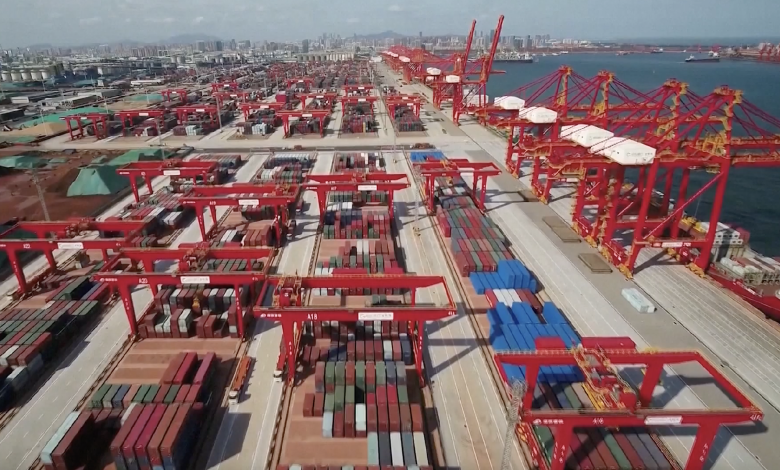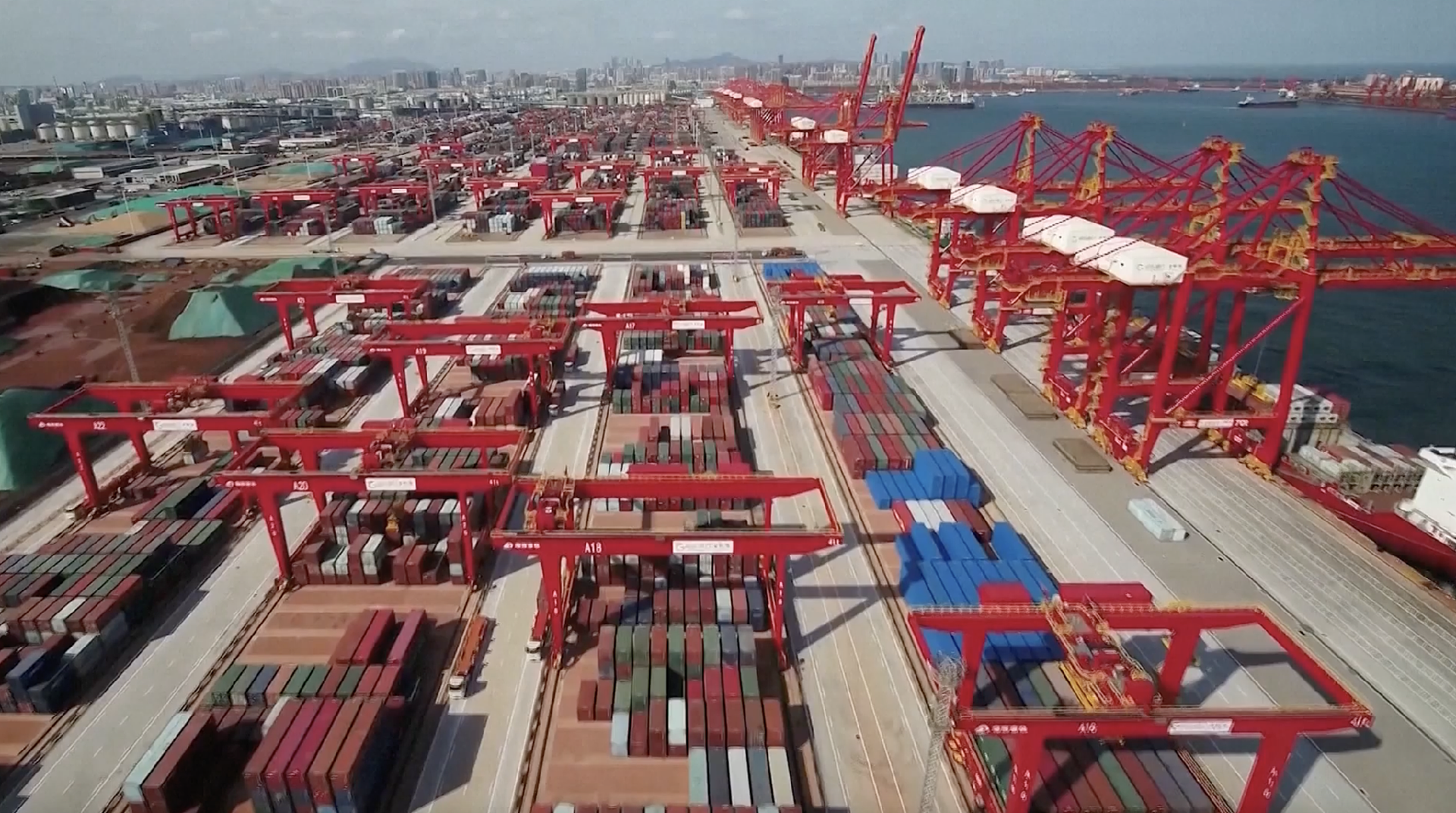Exploring new chances for foreign trade to drive economic recovery


<img src='https://news.cgtn.com/news/2024-10-15/Exploring-new-chances-for-foreign-trade-to-drive-economic-recovery-1xIO6FcFlo4/img/c43298620f854aa4adb0c5e5f83c8e00/c43298620f854aa4adb0c5e5f83c8e00.png' alt='Aerial view of the bustling port featuring cranes and containers on October 9, 2021, in Rizhao, China's Shandong Province. /CFP'
Editor’s note: Yang Hangjun is vice dean of the School of International Trade and Economics at the University of International Business and Economics (UIBE). The article reflects the author’s opinions and not necessarily the views of CGTN. It has been translated from Chinese and edited for brevity and clarity.
In light of the uncertainties and instability that plague the global external environment, along with multiple challenges hindering globalization, how China adjusts its foreign trade policies has become increasingly critical. Drawing on import and export data from the first three quarters of 2024, China’s foreign trade demonstrated strong resilience while facing ever mounting pressure from trading partners and adversaries alike.
The key question now is how to continue expanding the high-standard opening-up, cultivate new growth drivers for foreign trade, and explore new opportunities for foreign trade amid the intricate and ever-evolving external environment.
According to data released by the General Administration of Customs, China’s total value of imports and exports for the first three quarters of this year stood at 32.33 trillion yuan, making history by surpassing 32 trillion for the first time, marking an impressive year-on-year increase of 5.3 percent. Specifically, the total value of exports was 18.62 trillion yuan, up by 6.2 percent. Meanwhile, the total value of imports was 13.71 trillion yuan, representing a growth of 4.1 percent. The stable expansion in both imports and exports highlights the resilience of China’s economy and strong vitality of its foreign trade.
During the first three quarters, China saw growth in its trade with more than 160 countries and regions worldwide. In particular, the total value of imports and exports with countries participating in the Belt and Road Initiative totaled 15.21 trillion yuan, marking a year-on-year increase of 6.3 percent and accounting for 47.1 percent of total trade. During the same period, China’s imports and exports with partners like the EU and the U.S. also grew by 0.9 percent and 4.2 percent, respectively.
In terms of product demand, China’s exports of high-tech and green products have increased substantially. Exports of high-end equipment surged by over 40 percent, with mechanical and electrical products accounting for nearly 60 percent of total exports. The export value of the “new three”, i.e., electric vehicles, lithium batteries, and photovoltaic products, reached 757.83 billion yuan, making up 4.1 percent of total exports. These figures clearly demonstrate that China is steadily improving its international competitiveness in high-tech and green industries.
Despite the overall robust performance, challenges to China’s foreign trade should not be overlooked. Global trade protectionism has been on the rise, geopolitical conflicts have been frequent, and global supply chain is facing severe bottlenecks. All these issues have put pressure on China’s foreign trade development.
To tackle these challenges, China needs to continue advancing its high-standard opening-up, actively foster new growth drivers of foreign trade, and explore new opportunities for foreign trade. Here are several suggestions:
Deepening cooperation with Belt and Road partner countries
By strengthening partnerships with Belt and Road partner countries in such areas as infrastructure, finance, and technology, China can further diversify its markets and reduce its reliance on traditional markets such as Europe and the U.S.
Enhancing the competitiveness in the export of high-tech and green products
It is imperative to improve product quality and technological sophistication by investing more in the R&D of high-tech and green industries, which will help meet global demand for high-quality, eco-friendly products.
Promoting the development of new foreign trade forms, such as cross-border e-commerce
Taking advantage of the digital economy and internet technologies, China should propel the development of new business forms like cross-border e-commerce and market procurement trade in an effort to cultivate new growth drivers for foreign trade.
Optimizing the business environment and reducing costs for foreign trade enterprises
Measures such as tax cuts and fee reductions, streamlining administrative approval processes, and facilitating customs clearance will help lower operational costs for foreign trade enterprises and reinforce their international competitiveness.
Strengthen international trade rule-making and participation
China should actively participate in formulating international trade rules to ensure a greater voice. This will foster an international competitive environment that is fairer and more transparent for Chinese foreign trade enterprises.
Looking ahead, although the external environment is characterized by complexity and volatility, as long as we remain committed to high-standard opening-up and actively address various risks and challenges, China’s foreign trade will achieve even greater development through new frontiers. This will give new impetus to economic recovery and improvement. By continuously exploring new opportunities for foreign trade and driving economic restructuring and industrial upgrading, we are confident that China will remain strong and robust long into the future.

